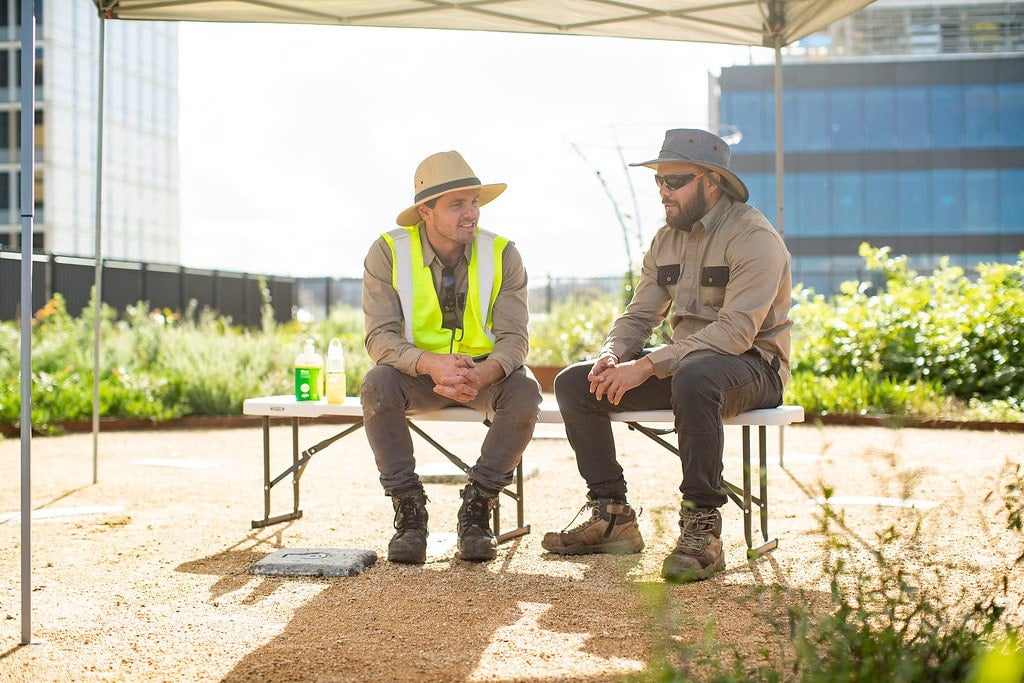Blog
Cancer risks in the workplace - the job's not done - yet
2 June 2015

The recent parliamentary inquiry into cancer cases among firefighters trained at Fiskville in Victoria has thrown cancer risks in the workplace back into the public spotlight.
However, for those of us working in cancer prevention and research, occupational risks for Aussie workers is gaining in importance. The scientific evidence around various risks in the workplace is steadily increasing and the need to translate this research into action is gathering pace.
It is also true that as we age as a community, cancer will become a bigger reality. As we stay in the workplace longer, being diagnosed with cancer while still at work will become more common.
Recently, industry and academic experts gathered at Cancer Council's 'kNOw cancer risks at work' forum to nut out the current state of play and what needs to happen next.
There were two main conclusions - firstly, that workers should be able to do a day's work without increasing their cancer risk. Secondly, those who have been exposed to carcinogens at work deserve proper compensation.
At the forum, we released a new report using data from Safe Work Australia. It showed that 4745 worker's compensation claims for cancer were paid between 2000 and 2012, just short of 400 a year. Some people might think that is a pretty big number. However, latest estimates suggest that around 5000 new cases of cancer each year are likely to be linked to the workplace. Clearly many cancer patients are missing out on the compensation they deserve.
The total payout of $360 million in compensation for workers who developed cancer as a result of work over the 12 years sounds pretty big too. Until it is put in context of the total worker's compensation bill for the same period. Cancer payouts represented less than one per cent of claims, which totalled around $54 billion.
Better recognition of the types of cancers that may have an occupational cause, combined with an established and agreed list of the kind of workplace exposures that might be responsible would be an important step forward. The Kiwis have managed to make progress through a 'deemed diseases' list, and that has not broken the bank there. So part of the solution is to ensure proper compensation is within reach.
But what do we do about reducing the risk for those of us still fronting up to work each day?
Let's start by acknowledging that progress has been made. Asbestos has been banned for more than 10 years. None the less, there is still too much asbestos in the built environment and we are not well enough geared to identify, notify and manage it. There is still a mountain to climb and the Asbestos Eradication and Safety Agency has been established to lead the charge.
We have banned smoking in most indoor workplaces, none the less too many workers, particularly those in the trades, continue to report being exposed to environmental tobacco smoke at work. Implementing the rules on that front seems a useful step forward.
SunSmart campaigns have advanced our thinking on sun protection for outdoor workers. Most of us need not cast our minds back too far to recall when last we saw a singlet wearing hatless tradie on a building site or doing roadworks. Building sun protection into the routine, in the same way steel capped boots and high viz vests are now the norm, is the challenge.
When we think of carcinogens, nasty unpronounceable and mysterious chemicals come to mind and there are a number of these that we have to contend with and manage. Individual industries, be that metal production, plastics or rubber manufacture, or mining all have specific challenges.
But what about more ubiquitous exposures like diesel engine exhaust, a class one carcinogen contributing to lung cancer risk? Most of us spend less than two hours on the daily commute, so this is less likely to be a problem. However, for those who drive for a living, it's a different story. Forty, 50 or more hours a week on the road can mean a whole lot more diesel engine exhaust inhaled. Even worse for those driving or working near heavy diesel powered equipment, particularly if they are in a confined space.
Progress is being made to reduce diesel engine emissions, but how fast new engines will be adopted remains to be seen. In the meantime, more needs to be done - quick fixes like winding up the windows, using aircon and installing simple filters to minimise exposure can make a big difference.
Occupational health and safety legislation around Australia has made great leaps forward since its introduction in the 1970s. The rules, boiled down, are that employers must provide a safe and healthy workplace. Workers also need to do their bit by following the systems and guidelines to minimise risk.
Throughout our 'kNOw cancer risks at work' forum, one theme was consistent. Continual improvement is needed to ensure the discoveries in research are translated in to more action to reduce the risks at work. Comprehensive regulation systems are an essential underpinning. And the talk on cancer clusters reminded us that the public's concern about occupational cancer remains high.
Cancer Council's Occupational and Environmental Cancer Risk Committee is undertaking some new initiatives to highlight some of these issues and work in partnership with others doing good things.
Watch this space...
Tags
